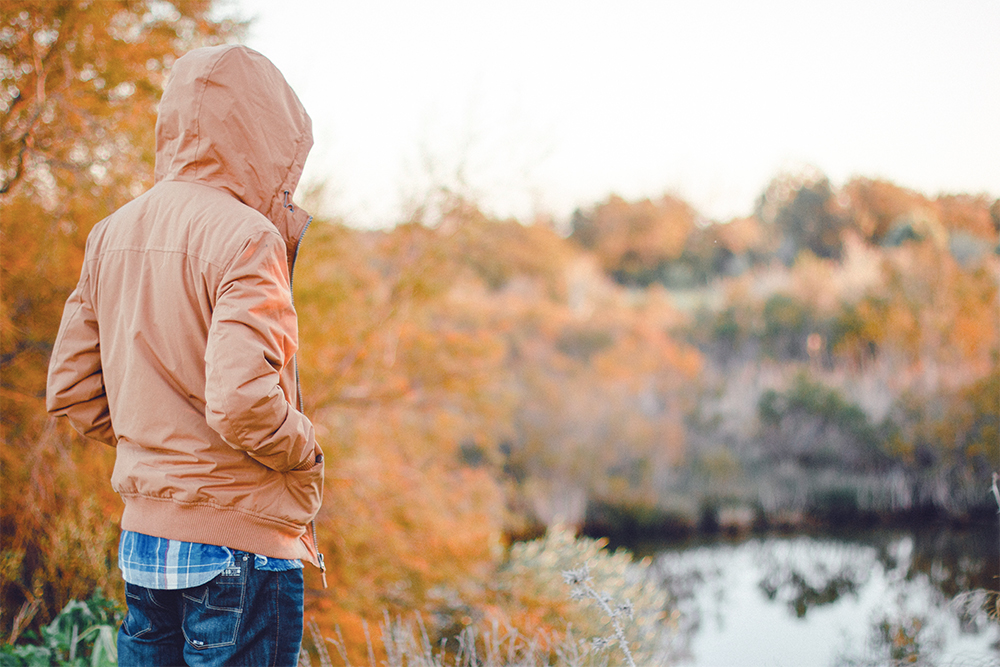Growth and Decay: How Turning to the Natural World Can Help Us Better Understand Ourselves
It cannot be refuted that exposure to the natural world can induce positive physiological effects. Walking, sitting in, or even looking at nature has been proven to decrease stress hormones, blood pressure, and heart rate, while simultaneously inducing relaxation effects noticeable within the nervous system. So, it’s no wonder that as the seasons change, we can feel a response, both emotional and physical, when observing nature transition from one state to another. In a way, it feels that our own states are changing with it side-by-side, seeming as though we are acting both as a witness and a partner in the transformations taking place.
Shinrin-yoku has been described as experiencing the forest atmosphere, or “forest bathing.” The idea of immersing oneself in nature as a form of therapy is not new. In fact, these methods have been used across the world for centuries. In our modern world, though, these practices can seem to be becoming more and more rare, especially as many societies and cities move towards urbanization and away from the natural world. But these types of interactions between humans and the natural environment still remain just as important. When you walk into a forest, there’s a sense of familiarity and comfort that takes hold; I know that almost every time I find myself immersed in the natural environment, I’m constantly questioning: “Why don’t I do this more often?
It is not uncommon to feel an emotional tie with the nature you find yourself in. For some people, it could be due to a sense of “getting back to our roots.” But at times, it might feel inexplicable. These feelings and connections can, and should be, explored whenever we are presented the opportunity. To bathe in the forest allows for us to study the world around us, the world which our species has co-evolved with for centuries. These natural systems have been perfected over millions of years of evolution; don’t you think there’s something we could learn from examinations of them?
In studying nature, perhaps we can discover more about ourselves and the human societies in which we live. In exhibiting mindfulness and demonstrating care and appreciation for the environment, we can practice or learn about characteristics that might be able to improve human communities as a whole. After all, lessons found in nature can also be found in the teachings of our society. By looking at ecological niches, we can understand how individuality is a necessary component that shapes communities. Understanding interdependent relationships within nature allows us to see how these types of connections are present in our own lives, too, and consequently can foster an increased sense of empathy.
Perhaps it is because of this that the changing of the seasons can hit us so hard. We observe nature, a world we feel inexplicably connected to, facing hardship and decay. As creatures capable of empathy, maybe we almost feel this hardship as our own. Just as the natural world undergoes cycles of growth and decay, we humans do, too. In turning to nature to observe and understand, maybe we can get a better comprehension of our own mental states and transitions as well. And while these transitions can induce a lot of introspection, they also can be the cause of beneficial mental health alterations.
Looking to nature, it can be difficult to view anything lacking in beauty; even processes misconstrued as negative by human society, such as decay, demonstrate the absolute magnificence and complexity of every cycle on the planet. This might also be why we experience decreases in stress and, conversely, increases in relaxation when we find ourselves within the natural world. One example we can turn to in order to better understand this is one of the most favored annual natural changes: fall foliage.
During the fall season, we are able to witness a sort of “second spring,” according to Albert Camus; each leaf is like a flower with their contrasting bursts of color. If you feel an affinity towards this phenomenon, you’re not alone. But have you ever wondered why it is we feel this type of response to fall colors?
According to Jason Brunt, an assistant professor at Biola University, “visual contrast grabs our attention from infancy onward.” As the trees turn bright red, orange, or yellow, often juxtaposed with bright green, autumn becomes rich in visual contrast, which is perceived as “pleasantly exciting.” According to Brunt, the human brain interprets this abrupt, dramatic change as a signal, likened to listening to a steady hum of background noise and then suddenly hearing a loud boom. This sudden change provides us with striking visual stimuli that is unique. And because of this uniqueness, we tend to think it’s meaningful, especially as it comes and goes at regular intervals.
The change of season can also remind us of our past experiences. Autumn leaves often evoke associations with past experiences, such as childhood memories from the same time of year. These seasonal memories can be activated when we encounter the fall leaves every year, even if we don’t consciously think about them.
Michelle Harris, a psychology professor at William James College, asserts that an autumn stroll can be an excellent stress reliever. When an individual experiences stress, their brain and body are shifted into survival mode. A positive experience, however, can redirect one’s attention and reverse this process. Taking account of the day-to-day changes in colors and patterns within the fall foliage can be an exercise in mindfulness, too.
Perhaps this is the type of escape and relaxation we crave, the type that is unique to whatever natural environment you might find yourself in; maybe mindfulness in nature allows us to understand the simplicity in generating our own happiness, in finding beauty in every aspect around us. The connection we feel to the natural world as humans is one that cannot be denied, and we will not be able to fully understand our relationship with this world until we find ourselves immersed in it. Cycles of decay and rebirth are prevalent in the environment and have been for millions of years. Maybe this relationship we feel with nature can help us better understand these cycles as we go through them ourselves. Keep this in mind as we head into the depths of winter; what can we learn from the environment around us?



